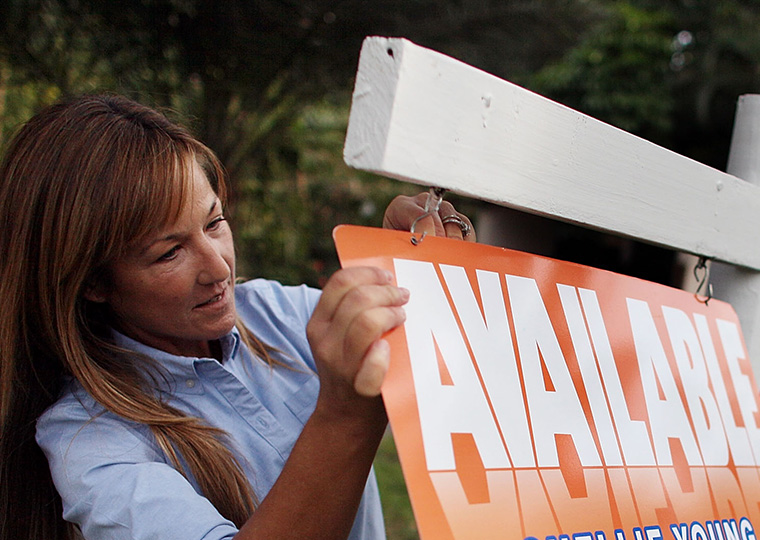The Fed’s gambit didn’t trigger a home-price recovery, but research shows it reduced subprime foreclosure risk
By the time the Federal Reserve stepped in with its initial quantitative easing (QE) fire hose in late 2008, home prices were already down more than 25 percent from their peak, the S&P 500 stock index had shed more than 40 percent from its 2007 high and unemployment had increased three percentage points to nearly 7.5 percent.
With its federal funds rate already pushed down to near zero, the Federal Reserve had pretty much run out of conventional moves to buoy the fragile economy, and a fiscal policy response from Congress was absent as the changing of the guard from the Bush administration to the Obama White House played out. (An earlier countercyclical fiscal policy response had been enacted by the Bush administration.) Hence, the central bank’s efforts to pump new money into the U.S. economy.
Given that imploding primary and secondary mortgage markets were threatening to take down the broader economy, an important element of the Fed’s out-of-the-box QE policy was to buy up Fannie Mae and Freddie Mac mortgage-backed securities (MBS) and bonds. During QE 1 (the nickname given to the Fed’s initial round of expansionary monetary policy), the Fed added more than $1.25 trillion in mortgage securities to its balance sheet.
Opt In to the Review Monthly Email Update.
Four months after the Fed announced QE 1, the U.S. stock market turned the corner from bear market to a bull market that is still running in mid-2018. Unemployment began declining by the fall of 2009.
But the Fed’s QE policy didn’t immediately set off a recovery in housing. Home prices fell another 10 percent between late 2008 and March 2012, a period when the S&P 500 rose nearly 70 percent and unemployment had descended from its 10 percent peak to 8.2 percent.
Nor did the Fed’s unconventional buying binge help visibly ease the burden of many homeowners. Despite its epic effort to push interest rates to historic lows, many households mired with negative equity and newly unemployed inhabitants were effectively shut out of refinancing, which would have increased household disposable income.
The federal government’s programs (HARP, or Home Affordable Refinance Program; and HAMP, or Home Affordable Modification Program) to help borrowers weren’t initially effective. (A California anti-foreclosure measure enacted around the same time was far more effective.) A 2012 overhaul of the federal effort, finally, provided relief to millions of homeowners.
That the Fed policy didn’t seemingly lay the groundwork for a timely rebound in housing prices has raised the question of whether QE was an effective tool for real estate. A working paper from UCLA Anderson’s Stuart Gabriel and Copenhagen Business School’s Chandler Lutz found that while QE didn’t cause a quick turnaround for the housing market, it did help slow its decline, notably by preventing some subprime foreclosures.
Gabriel and Lutz studied the reaction of key market variables to 48 instances between 2008 and 2014 when the Fed announced monetary moves. To best isolate the direct impact of QE policy they limited their analysis to a narrow window of time around a Fed announcement or major speech: the 15 minutes before the event through 105 minutes after. Their analysis looked at all three QE initiatives. They found the largest impact occurred in QE 1, which included the Fed’s MBS buying spree.
The Federal Reserve typically has a more direct impact on the path of short-term rates through its handling of the federal funds rate. Unconventional policy in the form of Fed purchases of longer-dated U.S. Treasuries and GSE (government-sponsored enterprise) mortgage-backed securities was aimed at pushing longer-term rates lower as a mechanism to induce more lending and investment.
The Fed purchases, pushing up prices for mortgage-backed securities and Treasuries, had the opposite effect on interest rates, pushing them down. Gabriel and Lutz found that a 25-basis point decline in the 10-year Treasury note rate was associated with a 30-basis point yield reduction for the Fannie Mae 30-year MBS. That, in turn, helped to lower mortgage rates, which allowed the subset of homeowners with positive equity (and jobs) to refinance and reduced the purchase cost for new buyers.
They also found that the same 25-basis point reduction in the 10-year Treasury rate eased the fear factor for investors in subprime MBS. The ABX index tracked the pricing of credit default swaps, a form of insurance, for baskets of subprime mortgages and was considered a proxy for foreclosure risk. The price of this insurance had risen about 70 percent by the time QE arrived, compared to the cost before the crisis took hold, reflecting growing anxiety over the pace of subprime foreclosures.
Within a few months of the Fed’s QE1 announcement, this barometer of subprime risk calmed. Gabriel and Lutz estimate that a 25-basis point decline in the 10-year Treasury rate resulted in a 15-basis-point rise in the ABX index (higher index values = lower perceived risk). They estimate that Fed intervention reduced the cost of insuring $10 million of subprime mortgages by $116,000. “Hence, expansionary unconventional monetary shocks lead to substantial reductions in the default risk for the vast majority of lower qualified borrowers, meaning that recent unconventional monetary policy actions were successful in stimulating the subprime housing market system,” the researchers write.
Indeed, the rate of foreclosures on subprime borrowers slowed as QE 1 took hold. Gabriel and Lutz modeled the impact of QE moves on Zillow’s foreclosure-per-10,000-home-owners rate. They ranked counties by their exposure to subprime mortgages. As to be expected, the foreclosure rate is typically higher in counties with the highest exposure to sub-prime mortgages. As the housing crisis intensified, the authors note, the difference between subprime and prime foreclosure rates widened. But once QE arrived, that spread reverted to its pre-crisis level. The authors estimate that QE 1 policy kept 6.6 more subprime homes per 10,000 out of foreclosure during the crisis. The impact on prime foreclosure rates was “muted.”
Given that foreclosures typically hit households facing the double whammy of falling home prices (negative equity) and rising unemployment, Gabriel and Lutz also studied how monetary policy might have played into those key variables.
The employment-to-population ratio they studied is persistently higher for prime counties relative to subprime counties. By 2010 the ratio had declined to about 48 percent in prime counties and around 44 percent in subprime counties. Their model suggests that 18 months after a QE 1 stimulus event, the employment-to-population ratio in counties with the highest concentration of subprime borrowers was 1.25 percentage points higher than it would have otherwise been. For prime-borrower counties the employment boost was one percentage point.
Lowering the unemployment rate doesn’t necessarily boost home prices, but it does imply that more homeowners have income to keep up with their mortgage payments and steer clear of foreclosure.
Gabriel and Lutz ran a similar analysis for home prices, but found only a limited impact. That made for a long slow slog for many homeowners with negative equity (5 percent of homeowners with mortgages still have negative equity, down from a crisis peak of 26 percent); but absent the Fed’s unconventional QE policy, the hurt would have been worse.
Featured Faculty
-
Stuart Gabriel
Arden Realty Chair; Distinguished Professor of Finance; Director, Richard S. Ziman Center for Real Estate at UCLA
About the Research
Gabriel, S., & Lutz, C. (2017). The impact of unconventional monetary policy on real estate markets.






